Guide to 10-Player Content
Raids and Strike Missions are 10-player instanced content. Generally considered the hardest PvE content in Guild Wars 2, Raids and Strike Missions require players to coordinate to handle mechanics, survive, and defeat bosses. The seven Raid Wings progress players through three or four bosses and encounters each, while Strike Missions are typically a single-boss fight without interim events.
In this guide we hope to answer some FAQs, offer some tips for getting started, and point you to further resources.
Why?
There are a number of reasons why players choose to invest time and energy into learning and clearing raids and strike missions. These include the satisfaction of finally defeating a boss, spending time with friends working through difficult challenges, or simply the in-game rewards.
10-player content is a good source of ![]() Mystic Clover
Mystic Clover![]() Glob of Ectoplasm
Glob of Ectoplasm
Ultimately, while Raids and Strikes have a variety of special perks, most players do them because the encounters are fun. Whether you enjoy learning new mechanics and classes, working together with new people, playing with an established set of friends, or just exploring side stories in Guild Wars 2: Raids and Strikes have many draws for players. If you’re curious we’d strongly recommend you give them a shot – you may find a new favorite game mode!
Guaranteed Drops
Each Raid boss cleared will drop 2![]() (one wing a week will drop 4
(one wing a week will drop 4![]() per boss due to Call of the Mists), a random named Exotic item, one
per boss due to Call of the Mists), a random named Exotic item, one ![]() Legendary Insight
Legendary Insight![]() and named Exotic per boss), will often exceed 100
and named Exotic per boss), will often exceed 100![]() in any given week.
in any given week.
Special Drops
Each boss has the chance to drop semi stat-selectable Ascended Weapons with unique skins. These are guaranteed drops for players’ first Challenge Mode kills. Rarely, certain bosses will drop special Infusions that can be used to give players special effects or sold on the Trading Post for lots of gold.
Currencies
In addition to random drops, Raids and Strikes give guaranteed currencies that can be used to purchase stat-selectable Ascended Armor, Weapons, and Accessories. Additionally, Magnetite Shards from Raid Wings and Green Prophet Shards from End of Dragons Strikes can be traded for up to 15 ![]() Mystic Clover
Mystic Clover
Titles and Achievements
Each Strike and Raid Wing has a number of Achievements players can complete for a hefty Achievement Point boost. Some Wings will additionally be associated with special Titles, such as the prestigious Voice in the Void or Champion of Zommoros titles.
Legendary Armor and Ring
Raids are the only PvE option for obtaining Legendary Armor which is permanently stat-selectable end-game gear. Each set of Legendary Armor has different graphics and animations, with the Perfected Envoy Armor obtained through Raiding as the option with the most dynamic animations. Additionally, one of the Legendary Rings, ![]() Coalescence
Coalescence
How to Start
You may have already heard that Raids are incredibly difficult and gotten scared away. Alternatively, you may have heard that Raids are incredibly easy and you can roll right in. Ultimately, Raids are somewhere in the middle: while players should prepare before entering their first Raid, you don’t need to be a master going in.
In comparison, normal mode Strikes are less challenging than Raids. This makes these encounters a more forgiving place to experience your first mechanics and learn some Raiding best practices. Icebrood Saga strikes reward faster kills, while End of Dragon strikes have larger gold rewards and progressively difficult challenge modes. However, while players can roll into some strikes without organization, most fights will punish you for being unprepared.
Requirements
You must have Heart of Thorns and Path of Fire to Raid; Icebrood Saga to do Icebrood Saga Strikes; and End of Dragons to do End of Dragons Strikes.
Gear
While much of the community has ascended or even legendary items, this absolutely is not a requirement to get started – in fact, Raids and Strikes are a really great way to get this end-game gear. Unlike how Fractals require ascended armor with Agony Infusions, 10-player content is not gated behind any special gear. You can start with exotic gear and perform absolutely fine.
Starter exotic gear can be obtained through a variety of sources but one common inexpensive approach is to farm Verdant Brink for stat selectable gear boxes and to purchase runes and sigils from the Trading Post. After 2-4 full Verdant Brink meta events you should be able to gain an entire set of armor. Alternatively, you can purchase armor with Berserker’s stats for Karma in Orr, near Cathedral of Silence .
Ascended Backpieces and Trinkets are often easier to obtain than their exotic counterparts. These can be farmed using Living World Season 3 and 4 currencies.
Exotic gear will have slightly lower stats than their ascended counterparts, but this difference won’t affect your performance very much. While you’re learning, you don’t need to focus on optimizing your gear. Instead, be creative! For example, if you are running a power build you can use cheap ![]() Superior Sigil of Accuracy
Superior Sigil of Accuracy
For more information on gearing your characters see our gearing guides.
Builds
Instanced content rewards min-maxing. For example, if you are a new DPS player you should be focusing on optimizing your DPS. Losing out on DPS to bring the sustain of an open world build is detrimental to your healers: while you may think of this as making their jobs easier this actually increases pressure on them by extending the fight with your DPS loss. The same concept is true for other roles.
All classes are playable in Raids and Strikes, but some builds and roles are easier to pick up than others. Check the list below for some builds commonly considered to be easier for new players, or simply browse through our build database to find something that suits your gameplay.
 Recommended
Recommended
Hammer
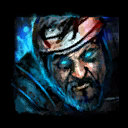
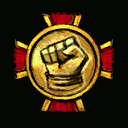
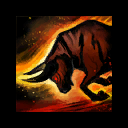
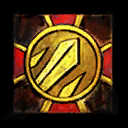
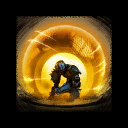
 Low intensity
Low intensity Recommended
Recommended
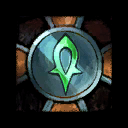
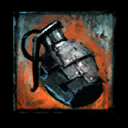
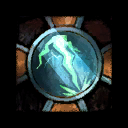
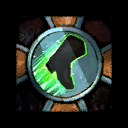
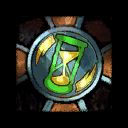
 Low intensity
Low intensity Recommended
Recommended
Rifle
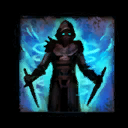
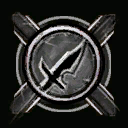
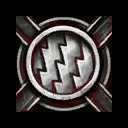
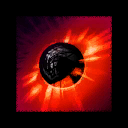
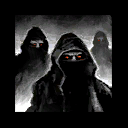
 Recommended
Recommended
Dagger offhand
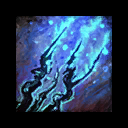
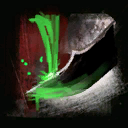
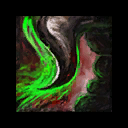
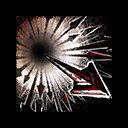

 Low intensity
Low intensity
Axe & Axe
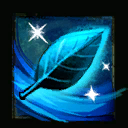
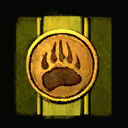
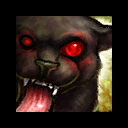
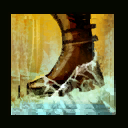
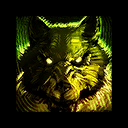
 Low intensity
Low intensity Recommended
Recommended
Focus offhand
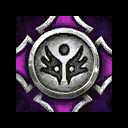
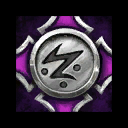
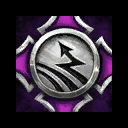
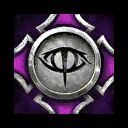
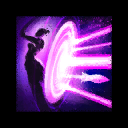
 Recommended
Recommended
Pistol
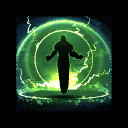
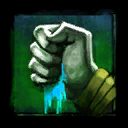
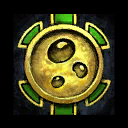
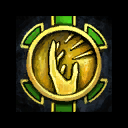
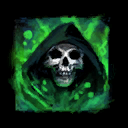
 Recommended
Recommended
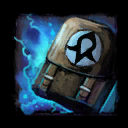

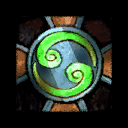
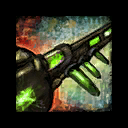
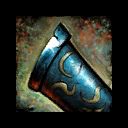
Mindset
Before we dive in further, we want to emphasize that the most crucial thing to remember is that you are part of a team. Trust your squadmates, and support them in turn. The objective of Raids and Strikes is to kill the boss, not to be the top DPS.
Press “F”
Playing in a 10-player squad means 10 people can make mistakes, including you. Ten people will be learning during trainings, including you. You should always prioritize resurrecting your squadmates immediately and doing mechanics. Your incremental DPS gain does not offset the DPS loss of an entire player or the DPS loss of a squad wipe.
Be proactive
Every build, including DPS builds, has tools to help the squad. While support players tend to be more focused on utility, new DPS players can often forget that they too have utility skills. You should always play proactively, focusing on the group success and not strictly on your own.
- If you have a shared condition cleanse and your squad is dying to conditions – use it! If you know the upcoming boss phase will be condition-heavy save these skills for when you need them!
- If your squad is dying to enemy mobs, cleave them down!
- If your healers are stunned and everyone is dying, stunbreak them!
With time and practice, your rotation should become second nature allowing you to adapt to anything that may go wrong. Keep your eyes open and your brain engaged.
When you advance from training runs to pug groups you may encounter players that are struggling more. Some of your best growth can come from these suboptimal situations – having to back up players messing up mechanics or compensate for low squad DPS can push you to understand encounters better and become a better player overall. Remember that you’re on a team – prioritize what you can do to help the squad over disparaging other players.
Learn in steps
Do not go to trainings unprepared. It is crucial to learn your rotation and know your skills before diving into kills or trainings. If you are learning your class the only thing you will be focusing on will be your skills. Each boss has a ton of visual and auditory noise you must be watching for – if you’re focused on learning your skills you will not be able to internalize the mechanic tells you’re aiming to learn.
For example, encounters will often utilize the following tells. To benefit from training you should be comfortable enough with your class to notice all of them.
- Screen Borders: often yellow or blue borders will indicate you’re targeted by a mechanic
- Sound cues
- Boss’s health percentage: bosses will use certain mechanics or phase at certain health percentages
- Boss’s breakbars
- Boss’s conditions and buffs: bosses may have boons you must strip or debuffs you can take advantage of
- Boss’s model: animations of telegraphed attacks
- Your boon bar: you may gain encounter-specific icons or buffs such as
 Aegis
Aegis - Your player model: you may gain icons over your head or AoEs under your feet indicating attacks or mechanics
- Your stamina bar: so you know if you can dodge or if you must sidestep or block mechanics instead
- Squad model: if a player dies you must be ready to res immediately
- Squad UI: player icons often light up when players are targeted by specific mechanics
- Minimap: a ton of encounter information is available via the minimap, and is often missed by newer players
- Chat: players will often coordinate attacks in chat
We’ve included an image showing how overwhelming all of this information can be. The last thing you want to be doing is splitting your focus between learning the encounters and learning your skills – you must be comfortable enough on your class to not need to focus on your skills during instanced content trainings.
Squad Composition and “meta”
At its core, 10-player content is killing bosses. This means squads must have damage to kill bosses, boons to enable damage and protect the group, and healing to stay alive long enough to kill bosses.
“Meta” builds and squad compositions are created by the best of the best players to kill bosses as fast as possible. However, these players often compete in raid tournaments and each build and comp is designed with that in mind. This means the “meta” is often not the best pick for many of us.
Ultimately, most groups you raid with won’t require you to deal high damage if you’re a healer, or won’t kick you if you die (although we strongly encourage you to set not dying as your main personal goal). Instead, it’s often better to secure a kill by taking crowd control, condition cleanse, or ![]() Stability
Stability
That being said, you can’t ignore the crucial parts of creating the squad. Boons are important and squads without boons will have a very hard time during the fights.
Four key boons are critical to endgame PvE damage:
 Might
Might Quickness
Quickness Fury
Fury Alacrity
Alacrity
For best results, players should aim to keep all four of these boons up permanently on everyone. Squads are formed to cover these. For help on leading your own squad and understanding effective builds for 10 player content – check out the 10 Player PVE Squad Composition Guide or assemble your team with the Team Builder.
This does not negate the importance of other boons. While they take a very slight backseat to these core four offensive boons, it will often make a huge difference if you have ![]() Swiftness
Swiftness![]() Vigor
Vigor![]() Dodge
Dodge![]() Aegis
Aegis![]() Protection
Protection![]() Resolution
Resolution![]() Regeneration
Regeneration
Squads are designed to maintain boons on all players at all times. This is why you’ll often see squads looking for specific roles – they’re looking for a player to cover one or more of these boons.
Additionally, as boons are granted to five targets, squads are composed of two 5-player groups with a healer and sources of those boons in each party. This is due to skill prioritization: skills prioritize party members over non-party squad members.
In short, each player in the squad has an important role. DPS players must be maximizing their damage to ensure the boss is defeated, boon supports must be providing ample boons for their squad, and healers must keep their squads alive. This means that players should have optimized builds.
Advanced: Role compression
To maximize damage squads will often “compress” roles. For example, healers will usually provide most boons allowing for more pure DPS and fewer boon DPS. The boon DPS that are brought are typically builds that are capable of maintaining high DPS while they provide their assigned boon.
Learn your class
Once you have a build, basic knowledge, and a proper mindset, it’s time to practice. This might look a little different for different roles. As a total beginner, it’s likely you’ll start with boon support or DPS as often those require cheaper and more universal gear to start. If you start here, your goals are to improve DPS and boon uptimes.
You don’t need to be “hitting benchmarks” before entering a raid, but you should have some understanding of how to chain your skills together and what each skill does so you won’t be focusing on your rotation; instead, you’ll be able to focus on learning boss mechanics and the encounter itself.
The first step to this is reading your skills. You don’t need to start knowing the ins and outs of every single skill but figuring out which skills do big crowd control, condition cleanse, provide ![]() Stability
Stability
Learn your rotation
The next step is to learn your rotation. In order to do this, follow the guide you have chosen, and go to Lion’s Arch Aerodrome . Near the bank there is a portal for the Special Forces Training Grounds.
Here you can spawn a Golem to practice on.
Your damage is heavily contingent on your boons and the Golem’s conditions. When practicing, you should spawn your Golem with all conditions and add all boons to yourself. On top of that use your food and utility.
The goal is to simulate a realistic scenario to compare your damage to.
Read your build guide, and practice the rotation listed. Often rotations are the ultimate min-max for that build, and easier rotations exist. Prioritize executing a simpler rotation with your heaviest-hitting kills perfectly, rather than doing a whole complicated rotation badly.
Note: We do not post benchmarks on our build guides as those are very hard to reach by most of players. Instead you can try looking up benchmarks on YouTube or on hardcore raiding community pages. To start aim for 70-80% of the final number, or between 30-40k for pure DPS specs, and 20-30k for offensive support specs.
You should be aware that benchmark numbers are unrealistic in actual encounters, especially for less experienced players. Practicing on a golem serves another purpose: being comfortable with your attacks allows you to avoid getting flustered and allows you to pay attention to the actual boss encounter.
Practice Practice Practice!
Once you get the skeleton of your rotation down try testing it in other situations! Try taking on a World Boss or a Meta Boss. The Chak Gerent is a great option for this – it bounces around and has AoEs that can hurt you, but is ultimately not very threatening. This should give you the experience of having to adapt to an unpredictable environment, and give you practice recovering from interruptions.
Finally, give the Icebrood Saga Strikes a shot. Shiverpeaks Pass, the Fraenir of Jormag, and the Voice and Claw of the Fallen are all considered easier strikes – see how you perform in an instanced environment!
If you’re playing a heal support, the training Golem may be harder to practice on. These builds often rely on responding to encounters – it’s extra important for you to know what each of your skills do to be able to respond adequately. World Bosses and easier Strikes are great ways for you to practice these roles too. Often players in open world events fail to avoid certain mechanics – try challenging yourself to outheal a certain telegraphed mechanic to get practice responding to an attack.
Learning the Encounters
You have a build, you’ve smacked the training Golem, you’re ready – now what?
First, be prepared to see and hear the mechanics. This means turning up your environmental sounds to hear sound cues and adjusting your graphics settings (by increasing the character model limit to at least medium, and shaders to medium).
Many mechanics’ telegraphs are consistent across content:
- green circles generally mean players should stack in these
- red circles usually mean players should get out of them
- chimes or fizzly audio cues mean you’re getting targetted by a mechanic
- your screen gaining a red, blue, or yellow border also mean you are the target of mechanic or standing in encounter-specific AoE
For example, this is a slightly prolonged version of the sound you hear when standing on teleporting areas during the first raid boss introduced to the game: Vale Guardian.
Find a group
Icebrood Saga Strikes are very friendly to new players. Typically you can join any strike in LFG and tell the squad that you’re new and they’ll give you a quick rundown of things to watch out for.
Raids and End of Dragons Strikes can be harder to enter as a fresh player. Our Raid Guides and Strike guides can give you overviews of every mechanic and general strategies.
Generally, having a commander calling out mechanics in a voice chat and other players communicating will make your experience much better as a new player. That’s why we would advise against trying to join in-game LFG for trainings without joining a voice chat. Hardstuck regularly runs Raid and Strike trainings through our Discord where everyone is welcome to join! You don’t need to speak or even have a microphone – just being able to listen to someone explaining in real time can be incredibly helpful.
Good luck and we hope you have fun!











